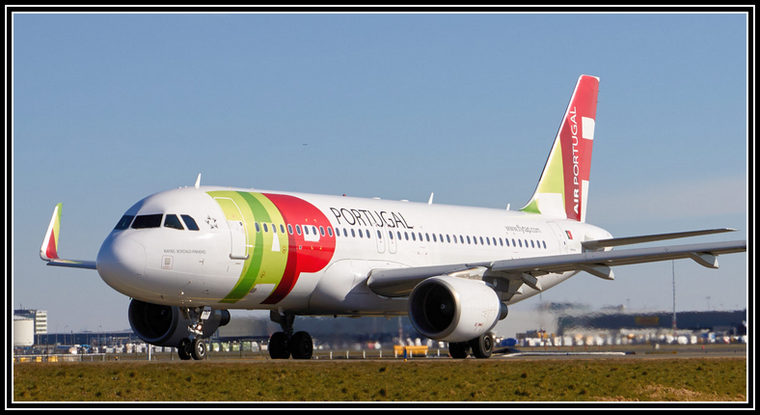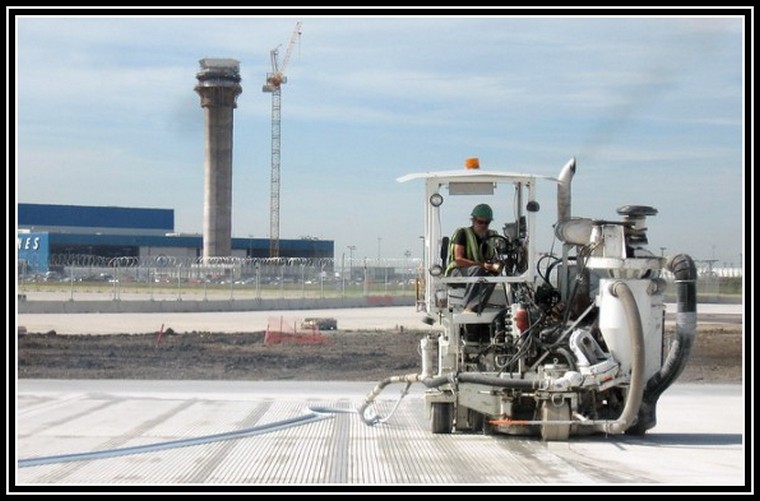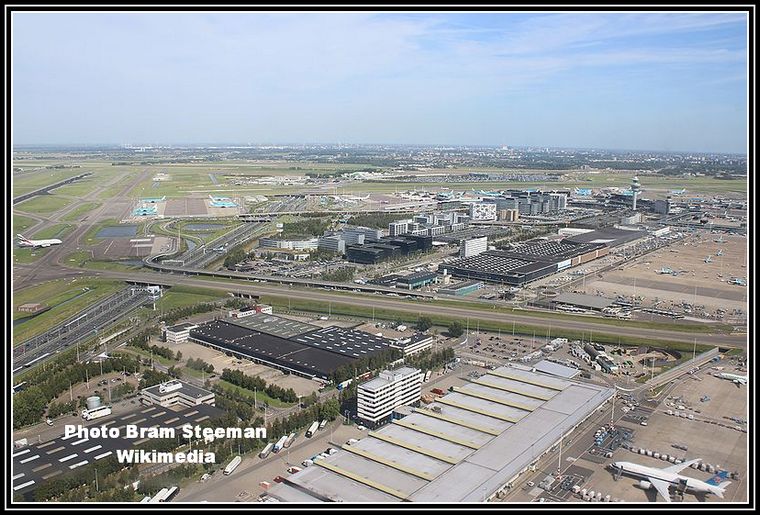Airlines, Airports and Airliners 21 to 27 Nov 2022
Compiled by Willie Bodenstein
Google Banner Ad

ICAO ADVOCATES FOR DECARBONISATION OF AVIATION AT COP 27.

Participating in a round table of Heads of State, Prime Ministers and Chiefs of International Organisations during COP 27, ICAO Council President Salvatore Sciacchitano advocated for the realisation of the ICAO Assembly's decision to reach net zero emissions from air transport by 2050.
"Achieving net-zero carbon emissions by 2050 will require substantial and sustained investment and financing over the coming decades. We must furthermore assure reliable and affordable support and capacity-building for the many developing countries and States with particular needs, which will be depending on it to help play their part," Mr. Sciacchitano said. "An important part of my message to you here today is that the work to begin addressing these objectives for our sector has already started."
This goal is to be achieved collectively, without attribution of specific obligations or commitments in the form of emission reduction goals to individual States. One of the key features of the agreement is the recognition that each State's special circumstances and respective capabilities will inform each State's ability to contribute and within its own national timeframe.
"ICAO is fully cognisant of its global responsibilities towards the sustainable future of the international aviation sector and of the planet. We also remain deeply cognisant of the critical importance of international air connectivity to the civil societies and economies of Small Island Developing States, Landlocked Developing Countries and Least Developed Countries," remarked the Council President. "As aviation continues to explore and adopt the incredible new technological innovations arising today in aeronautics and renewable energy propulsion, ICAO also recognises how imperative it is to start putting in place the right policies, legal frameworks and modernised infrastructure to enable this evolution to emissions-free flight."
For example, ICAO launched its Assistance, Capacity-building and Training for Sustainable Aviation Fuels (ACT-SAF) programme in June. It will provide tailored support to States on sustainable fuel development and deployment and facilitate related partnerships and cooperation around the world. An increasing number of States and international organisations are becoming actively involved in this programme, which recognises the key role to be played in this endeavour by sustainable fuels and we expect many more States and organisations to join in the coming months.
To reduce the impact of aviation on the global climate, States, the industry and all other relevant stakeholders have in fact been pursuing a basket of CO2 reduction measures through ICAO for many years now. This contributed to modern aircraft being 70% quieter and 80% more fuel-efficient than their early predecessors.
The introduction of radical, disruptive and in many cases revolutionary innovations in technologies and operations is now required to deliver the overall decarbonisation needed to keep global temperatures in check.
"This transition fuelled by frontier technologies and featuring many new entrants to the aviation ecosystem, holds tremendous economic potential for developing States. We are greatly encouraged at ICAO that it can also help establish a more level playing field toward an inclusive and effective global green transition in aviation in the coming decades," Mr Sciacchitano said. "We will be proud to leverage our 78 year history of driving international consensus and progress in air transport to assure that this is realised."
In the immediate term, ICAO Member States and industry will continue pursuing additional sustainability objectives, notably through the aforementioned expanded use of sustainable aviation fuels and the ongoing implementation of the Carbon Offsetting and Reduction Scheme for International Aviation (CORSIA).
Google Banner Ad
BOEING FORECASTS AIR CARGO TRAFFIC TO INCREASE TWOFOLD OVER NEXT 20 YEARS

Boeing [NYSE:BA] is forecasting strong demand for air cargo services through 2041, with traffic doubling and the world's freighter fleet expanding by more than 60%. Boeing today released details from its 2022 World Air Cargo Forecast (WACF), a biennial detailed analysis of evolving industry dynamics.
The 2022 WACF projects that the world's cargo fleet will require nearly 2,800 production and converted freighters for growth and replacement through 2041. With cargo traffic doubling over the forecast period, operators will need to switch to more capable, fuel-efficient and sustainable jets like the 777-8 Freighter to meet demand, according to the Boeing forecast. A third of deliveries will consist of new production freighters, while the remaining two-thirds will be freighter conversions, such as the 737-800 Boeing Converted Freighter (BCF), providing carriers with increased flexibility in existing and emerging markets.
"While the air cargo market is returning to a more normal pace after historic demand in the last two years, structural factors including express network growth, evolving supply chain strategies and new cargo-market entrants are driving sustained freighter demand," said Darren Hulst, Boeing Vice President of Commercial Marketing. "In the global transportation network, air freighters will continue to be a critical enabler to move high-value goods, in increased volume across expanding markets."
The 2022 WACF also provides these insights about the cargo market through 2041:
The Asia-Pacific region will take delivery of nearly 40% of all freighters, including new and converted freighters.
While dedicated freighters are 8% of the total commercial airplane fleet, they continue to carry more than half of all air cargo, with passenger airplanes carrying the remainder as belly cargo.
The global freighter fleet will grow by more than 1,300 airplanes to more than 3,600 jets over the next two decades.
The complete 2022 World Air Cargo Forecast can be found at www.boeing.com/wacf.
As a leading global aerospace company, Boeing develops, manufactures and services commercial airplanes, defence products and space systems for customers in more than 150 countries. As a top U.S. exporter, the company leverages the talents of a global supplier base to advance economic opportunity, sustainability and community impact. Boeing's diverse team is committed to innovating for the future, leading with sustainability and cultivating a culture based on the company's core values of safety, quality and integrity. Join our team and find your purpose at boeing.com/careers.
TAP CABIN CREW STRIKE 8 & 9 DECEMBER

TAP received the SNPVAC strike notice for December 8 and 9, confirming the most difficult scenario and the union's total inflexibility to negotiate a solution that does not harm Customers, the Company and the Portuguese people.
Thus and to avoid that Customers with flights booked for these days are further affected by the uncertainty of whether or not their flight, due to the crew strike, will take place, TAP decided to cancel 360 flights scheduled for the two days of the strike. The process of cancelling flights and informing passengers has already begun. If your flight is to be cancelled, you will receive a specific email with the alternatives. TAP recommends that you always check the status of your flight here.
TAP apologises for this situation and will do the best effort to minimise the impacts on Customers journey.
Google Banner Ad
THE TITANS FLY TO NEW HEIGHTS

We will fly the Titans Cricket teams to their away games in the forthcoming 2022/23 domestic season. The sponsorship is for the men's Momentum Multiply Titans and the Fidelity Titans women's teams and covers flights to and from their games played outside Gauteng. They cover the 4-Day Series in which the Titans are defending champions, as well as the One Day Cup and the T20 Challenge.
"Everyone at Airlink is excited and proud to be supporting the Titans teams in their respective summer season campaigns. It is a partnership that makes perfect sense. Like Airlink, the Titans are professional, methodical, dedicated and focussed competitors who set out to delight their fans with memorable performances," explained Airlink CEO and Managing Director, Rodger Foster.
"We have been in aviation and air travel for some time now and the experience that comes with that cannot be bought. Like the Titans they have a great history and track record and I'm really looking forward to the many successes that this partnership will bring," said Titans CEO, Dr Jacques Faul.
"What drew us to them are the places they reach domestically and throughout Southern African. It's pleasing to know that we can get to these destinations with Airlink and it will help us especially with our endeavours of Titans international," he added
Over the past two years we have been continually enhancing our service, extending our network, expanding our flight schedule and adding modern and efficient aircraft to its fleet.
UNITED BECOMES FIRST U.S. AIRLINE TO INVEST IN BIOFUEL REFINERY

United Airlines Ventures (UAV) announced a strategic investment in NEXT Renewable Fuels (NEXT), which is permitting a flagship biofuel refinery in Port Westward, Oregon, with expected production beginning in 2026. NEXT is a Houston-based company developing the bio-refinery which, at full production, could produce up to 50,000 barrels per day of Sustainable Aviation Fuel (SAF), renewable diesel, and other renewable fuels. UAV could invest as much as $37.5 million into NEXT, as long as the company meets certain milestone targets.
"Right now, one of the biggest barriers to increasing supply and lowering costs of sustainable fuel is that we don't have the infrastructure in place to transport it efficiently, but NEXT's strategic location and assets solve that problem and provide a blueprint for future facilities that need to be built," said Michael Leskinen, President of United Airline Ventures. "We believe this investment will not only bolster NEXT's ambitions and create near-term solutions to expand our SAF supply, but further demonstrates our commitment toward producing SAF at the scale necessary to decarbonise the aviation industry."
NEXT's biorefinery offers several unique benefits including access to a deep-water port, an existing industrial-grade dock and multi-modal logistics options, which facilitates access to feedstock options and fast-growth SAF offtake markets on the west coast. NEXT has secured an agreement with BP for sourcing 100 percent of its feedstock, further de-risking supply issues smaller facilities have historically experienced. NEXT has also received a crucial air permit from the State of Oregon. Once all the necessary approvals and permits are obtained and the biorefinery is operational, it has the potential to be used as a platform to scale SAF and deploy additional future technologies.
"The clean fuels industry is taking off and our access to feedstocks, multi-modal distribution, and major industry players positions us to be a leading SAF supplier on the West Coast," said Christopher Efird, CEO and Chairperson of NEXT. "United's investment in NEXT strengthens our resolve to be one of the clean fuels leaders in the transportation sector."
Today's announcement marks UAV's fifth SAF-related technology investment, and its first investment directly in a bio-refinery. United has been an industry leader in advocating for alternative jet fuel for years - including investing in more SAF production than any other airline in the world and flying the world's first passenger flight using 100% SAF in one engine. United also launched the Eco-Skies Alliance program, which among its 30 corporate participants, has collectively purchased more than 7 million gallons of sustainable aviation fuel.
Launched in 2021, UAV is a first-of-its-kind sustainability-focused ventures fund that targets start-ups, upcoming technologies, and concepts that will complement United's goal of net zero emissions by 2050 - without relying on traditional carbon offsets such as voluntary offsets or planting trees. To date, UAV's portfolio includes SAF producers and other companies advancing technologies including carbon utilisation, hydrogen-electric engines, electric regional aircraft and air taxis.
Google Banner Ad
Google Banner Ad
SHOVELS CAN HIT THE GROUND FOR MULTI-BILLION DOLLAR O'HARE AIRPORT TERMINAL

Construction can start on new passenger terminals at O'Hare International Airport. U.S. Transportation Secretary Pete Buttigieg and local, state and federal officials marked the milestone today at O'Hare after the Federal Aviation Administration completed the project's environmental review.
"Chicago's transportation infrastructure is what makes this city an economic powerhouse of global importance," said U.S. Transportation Secretary Pete Buttigieg. "Now, as we prepare to break ground on O'Hare's newest terminal, Chicago and this entire region will be positioned to grow and create good-paying jobs through the benefits of first-rate infrastructure, beginning with the construction project itself."
The review analysed Chicago Department of Aviation projects including new terminals, on-airport hotels, airfield and taxiway improvements and support facilities. It also reviewed the FAA's proposal to make permanent angled approaches to Runway 10R/28L to allow simultaneous arrival to multiple runways. The FAA concluded that proposed construction projects and changes to air traffic procedures will not significantly affect any environmental resources, including noise, air quality, water resources and historic sites.
Secretary Buttigieg also met with students studying on Chicago's Southside to become aviation maintenance technicians. During his visit at the Aviation Institute of Maintenance, where American Airlines is training new technicians, the Secretary heard how students can learn the skills necessary to move into good jobs in aviation.
President Biden's Bipartisan Infrastructure Law has made more than $73 million available to O'Hare and more than $20 million to Midway International Airport in the first year. The law created three programs, investing $25 billion total over five years into the U.S. aviation system.
The FAA operates three air traffic control towers at O'Hare and manages more than 700,000 annual arrivals and departures on eight runways at the airport. Find information about nationwide air traffic, airports, aircraft, pilots and other industry data in the new interactive FAA Fact Book.
SCHIPHOL: JOINT INVESTMENT IN DUTCH INFRASTRUCTURE A HISTORIC DECISION

Schiphol calls the joint investment in the accessibility of the Netherlands and the Amsterdam Metropolitan Area announced today by the Transport Region, the Province of North Holland, Municipality of Amsterdam, NS, KLM, ProRail, the Municipality of Haarlemmermeer, Schiphol Airport and the State a historic decision. Extending the North/South Line (Noord/Zuidlijn) will create additional space for international train connections to and from Schiphol, among other things.
"It is fantastic that the government is making this big investment. With this overall package of measures, we will ensure the airport's accessibility for passengers, employees and commuters well into the future. Extending the North/South Line (Noord/Zuidlijn) to Schiphol and Hoofddorp will encourage sustainable connectivity at the regional, national and international levels. This is because it will create space in the Schiphol Tunnel; space which can then be used by both national and international trains. The latter is important so that the train can serve as an alternative to air travel on short distances. Moreover, it will reinforce Schiphol as a multimodal hub by bringing together public transport, cars and planes. This is good for the sustainable accessibility of the Netherlands. We are pleased that our joint efforts are contributing to this. Robert Carsouw, Chief Financial Officer at Royal Schiphol Group."
Schiphol has a unique position as a multimodal hub. All forms of transport will converge at the airport: plane, train, bus, car, bicycle and, in the future, also metro. The extension of the North/South Line will strengthen this position. Work on extending the existing metro North/South Line towards Schiphol and Hoofddorp is expected to start in 2026 and be completed in 2037.
NORWEGIAN HAD 1,9 MILLION PASSENGERS IN OCTOBER

In October, Norwegian had 1.9 million passengers and delivered a load factor of 86 percent. October proved to be an active month for travels, both on domestic routes and to popular beach destinations.
"We are satisfied with delivering yet another strong month in terms of traffic figures. Our passengers particularly appreciated the routes to our many popular holiday destinations. For instance, more than half a million Nordic travellers chose to fly with Norwegian to the Mediterranean. This shows that we have a product offering that our customers highly appreciate," said Geir Karlsen, CEO of Norwegian.
Norwegian had 1,885,606 passengers in October, up 57 percent from October last year. The load factor in October was 85.8 percent. The capacity (ASK) was 2,703 million seat kilometres, while actual passenger traffic (RPK) was 2,319 million seat kilometres. In October, Norwegian operated an average of 67 aircraft and 99.4 percent of the scheduled flights were completed. Punctuality, as measured by the number of flights departing within 15 minutes of scheduled time, was at 84.2 percent in October.
"Given the current macro-economic environment, we acknowledge that demand will slow down in the winter season ahead. Thanks to good collaboration with colleagues and unions as well as flexible leasing terms, Norwegian is well positioned to tackle this quieter period. In addition, we are confident that our product offering fits well with our travellers' preferences and that this will contribute positively to capturing market share," said Karlsen.
On domestic routes in Norway, business and leisure travellers now benefit from additional choice, flexibility and seamless travel as a result of the co-operation between Norwegian and Widerøe. Norwegian is currently recruiting 700 new colleagues for the summer 2023 season when Norwegian will offer both new routes and increased frequencies to attractive destinations.
Google Banner Ad
BUSY AUTUMN AT CPH WITH 2.3 MILLION TRAVELLERS IN OCTOBER

More than 750,000 passengers passed through Copenhagen Airport during the popular week at the middle of the month and a few days either side. US travellers are also staging a comeback in the terminals. This October at Copenhagen Airport became one of the busiest months of the year with 2,264,263 passengers and Sunday 16 October was the busiest day with 88,757 travellers.
"We've had a great October with many happy holidaymakers in the terminals. To get days in October with almost 90,000 travellers says a lot about the continuing huge appetite for travel and many people took the chance to extend their summer, travelling to sunnier climes or soaking up the unique atmosphere of one of Europe's major cities," says Peter Krogsgaard, Chief Commercial Officer of Copenhagen Airports A/S.
The passenger figures for October represent a very significant increase of almost 700,000 passengers compared to the same month last year, when 1.6 million travellers passed through the terminals.
The most popular destinations are London, Oslo and Stockholm, but the Spanish sun and city destinations, such as Málaga and Barcelona, are enjoying the greatest increase in passengers.
More US travellers
You hear many more American voices at the terminals than you have for a long time. Routes to and from the United States are now doing so well that the number of passengers in October reached around 90,000 - which is not far off the figure for October 2019 before the pandemic struck.
Despite a quiet start to the year, some 660,000 passengers have travelled on routes to and from the United States so far in 2022.
"The United States is one of our most important long-haul destinations, so it's great news that we're getting back on track. The long-haul routes are of great importance to Copenhagen Airport's position as one of the most important traffic hubs in northern Europe," explains Krogsgaard.
Overall, the long-haul intercontinental routes out of Europe are up - from 75,000 travellers in October 2021 to 216,000 travellers in October this year.
New routes out of CPH
Winter is traditionally the quietest season in the skies. However, exciting new routes and travel opportunities are still being added to the programme. For example, SAS is reopening its routes to Miami, Prague and Tromsø, while increasing the number of flights to the popular destination of Gran Canaria.
In the past month alone, it was announced that Air Canada, which already flies between Copenhagen and Toronto, will open a route to Montreal; the Spanish low-cost airline Volotea will launch routes to Marseille and Nantes; the Polish carrier LOT will add the Polish city of Radom to its schedule, while easyJet will begin flying between Copenhagen and Nice.
"It's crucial for Copenhagen Airport that we constantly develop our route network, and thus Denmark's connections with the rest of the world. It's therefore gratifying that so many different airlines see the potential in CPH and chooses to open new routes out of Copenhagen," concludes Krogsgaard.
With the passenger figures for October, 18,690,771 passengers have passed through Copenhagen Airport in 2022 to date. The expectation is that CPH will have served around 22 million passengers by the end of the year.
Google Banner Ad
Google Banner Ad
Google Banner Ad

|
                    |























